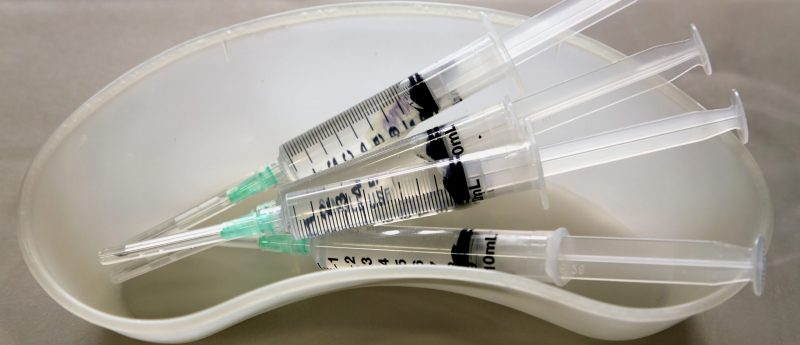Peek Behind the Paper: real-world evidence in support of Botox® use for individuals with chronic migraine

In this feature, we peek behind the paper with lead study author Catherine Stark (Austin Health, Melbourne, Australia): a real-world study concerning the efficacy of Botox® for headache relief in chronic migraine patients.
Under the Pharmaceutical Benefits Scheme (PBS) — the Australian medicines reimbursement mechanism — OnabotulinumtoxinA, known as Botox® (Allergan plc, Dublin, Ireland), is approved for headache prevention in adults with chronic migraine. To qualify for receipt of PBS-subsidized Botox®, patients must have failed to receive relief from at least three medications prescribed for headache prevention, as well as present with monthly headache frequencies in line with chronic migraine, as defined by the 3rd edition of the International Classification of Headache Disorders (ICDH-3).
In this feature, we peek behind the paper of a novel, multicenter, retrospective study, published in The Journal of Headache and Pain, led by Catherine Stark. In the study, researchers evaluated medical records data of 211 chronic migraine patients, across seven private, Australian neurology clinics to assess the efficacy of Botox® for headache prevention in Australian clinics.
Please could you introduce yourself and your institution?
I am a neurologist working at Austin Health (Melbourne, Australia) — a large, metropolitan, tertiary referral and teaching hospital. I also practice privately and have interests in headache and movement disorders.
What prompted you to conduct this research?
Botulinum toxin has been demonstrated to be an effective treatment for chronic migraine in large, placebo-controlled trials — such as in the Phase III REsearch Evaluating Migraine Prophylaxis Therapy (PREEMPT) trial — and in subsequent open-label, long-term follow-up studies, including the Chronic migraine OnabotulinuMtoxinA Prolonged Efficacy open Label (COMPEL) study.
…we conducted this study to assess whether the real-world effectiveness of botulinum toxin treatment for the prevention of chronic migraine was comparable to that seen in clinical trials.”
As a result, botulinum toxin has been in use in Australian clinics, with PBS reimbursement available, since March 2014. However, the patient population determined eligible for PBS-funded botulinum toxin treatment was not identical to the carefully selected study populations of the clinical trials. In addition, real-world administration of botulinum toxin has more variation in dose and inter-injection interval compared with the regimes implemented in the clinical trials.
Therefore, we conducted this study to assess whether the real-world effectiveness of botulinum toxin treatment for the prevention of chronic migraine was comparable to that seen in clinical trials.
What are some of the challenges associated with employing real-world evidence (RWE) data sources?
RWE data sources are less uniform and rigorous compared with those of clinical trials. For example, in RWE studies, patients and neurologists often document their progress via a diary or recording method that suits them, rather than through the use of a prescribed diary, as is practice in clinical trials. Further, incomplete and missing data are more common in RWE datasets.
What criteria did you use to define your study cohort and what may limitations may these have imposed on the outcomes of your study?
We defined our study cohort as patients who fit the PBS criteria for funding for chronic migraine — as outlined in the article — and who received at least two treatment cycles of botulinum toxin. Patients who were receiving treatments for other headache types, or who did not fit the PBS criteria, were excluded from our study.
The strength of utilizing real-world data in this study is that it demonstrates the treatments effectiveness — the therapy’s combined efficacy and tolerability — in a diverse range of patients…”
This included excluding patients who had not failed, or not had a contraindication to, three different oral agents previously, or in whom any co-existing medication overuse had not been addressed. The implications of these inclusion criteria are such that our study conclusions cannot be extended and assumed to include these groups of patients.
How did you assess treatment ‘success’ in your study, and did you incorporate patient-stated preferences into these parameters?
Our primary outcome measure was a 50%, or greater, reduction in monthly headache days. We also assessed several secondary endpoints including reductions in patients use of acute pain medications, days missed from work and monthly severe headache and migraine days. In assessing these latter, secondary measures, we employed the Headache Impact Test (HIT-6); this yields a quality of life score that reflects a patients’ overall impression of improvement.
What benefits did RWE use in your study offer over conventional clinical trial data?
The strength of utilizing real-world data in this study is that it demonstrates the treatments effectiveness — the therapy’s combined efficacy and tolerability — in a diverse range of patients, with less stringent inclusion criteria than previous clinical trials. The results of the study are therefore more generalizable to the Australian chronic migraine population who are being considered for treatment with botulinum toxin.
Do you have future RWE studies planned in the field of chronic migraine and/or Botox® use?
I am currently involved in a real-world study examining the duration of action of botulinum toxin when used for chronic migraine.
Disclosures:
Stark received travel grants from, and this research was funded by, Allergan (Dublin, Ireland).
